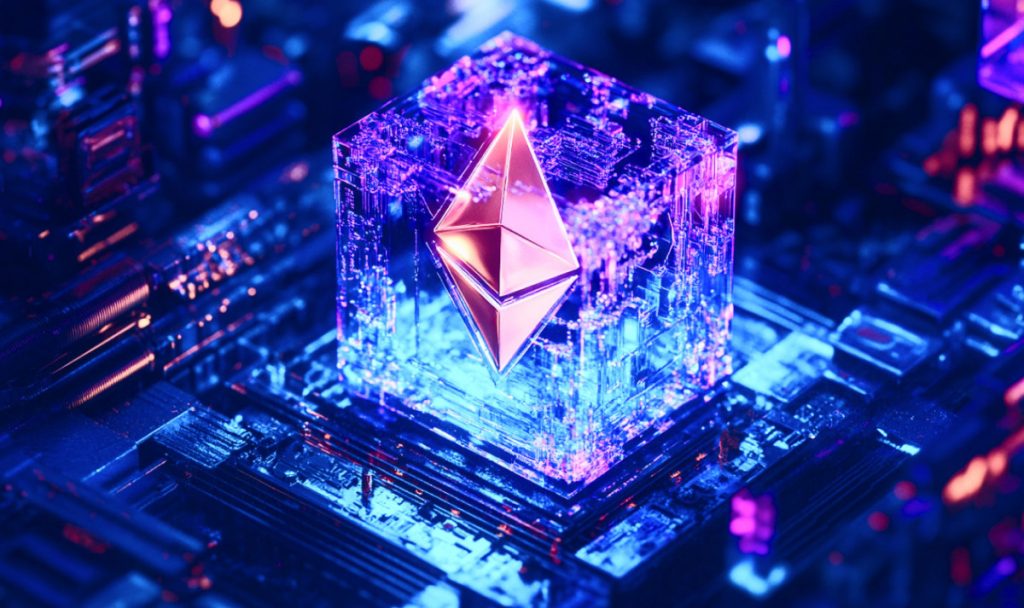Infura's Decentralized Infrastructure Network Makes Its Mark as an EigenLayer AVS
In Brief
Infura is gearing up to introduce its Decentralized Infrastructure Network as an EigenLayer AVS, signifying a leap forward in Web3 connectivity and accessibility across a range of blockchain ecosystems.

Web3 infrastructure provider Infura revealed its intention to roll out its Decentralized Infrastructure Network (DIN) as an EigenLayer AVS, indicating a significant improvement in Web3 connectivity and accessibility across diverse blockchain networks.
EigenLayer represents a protocol built on the Ethereum blockchain aiming to bolster the crypto-economic security of applications through the use of AVSs. These AVSs involve systems that necessitate customized validation processes, like sidechains, data availability layers, and innovative virtual machine types.
An EigenLayer AVS signifies any blockchain infrastructure that employs EigenLayer’s restaking method to introduce specialized validation techniques within the Ethereum ecosystem. Such systems can rapidly scale by utilizing the security provided by Ethereum’s validator network.
DIN is an innovative Web3 API marketplace crafted to boost the accessibility, reliability, and overall efficiency of Web3, providing developers with a fresh avenue for connecting with Ethereum and other blockchain technologies. In 2024, new networks decentralized by DIN will include Blast Layer 2, Mantle, Starknet, ZKsync, BNB Smart Chain (BSC), opBNB, and Scroll, expanding the horizons for developers seeking to build and scale their applications with robust infrastructure backing.
By launching DIN as an AVS through EigenLayer Web3 developers and operators can capitalize on the security of staked ETH alongside the collaborative features of EigenLayer to manage a diverse range of services. This fusion of restaking and infrastructure support will broaden DIN’s decentralized offerings, thereby reinforcing the Ethereum ecosystem.
In under a year from its first federated launch, more than 40 of the 50 providers within DIN have undergone testing, with over a quarter actively handling traffic. This remarkable progress illustrates DIN’s path toward complete decentralization, evolving into a permissionless marketplace and service discovery layer for Web3, enabling the initiation of new services across multiple Web3 gateways.
Why DIN Is Important?
The interplay of collaboration and competition among DIN Providers significantly lowers development costs and enhances access to decentralized Web3 gateways. By embracing a decentralized model, developers achieve superior connectivity to emerging blockchain networks at reduced costs while enjoying increased reliability. DIN empowers Web3 gateway providers to simultaneously compete and collaborate, crafting a mutually beneficial scenario for all stakeholders, especially users.
DIN providers collaborate on essential components such as router and node infrastructure kits alongside payment solutions to enhance decentralized RPC offerings for developers. Simultaneously, DIN serves as a pivotal solution for new blockchain networks aiming for effective scaling.
Disclaimer
In line with the Trust Project guidelines Please be aware that the information shared on this page is not meant to serve as legal, tax, investment, financial, or any form of advice. It's crucial to invest only what you can afford to lose, and for any questions, seek independent financial counsel. For more details, we recommend checking the terms and conditions along with the assistance pages provided by the issuer or advertiser. MetaversePost is devoted to delivering accurate and unbiased reporting; however, market conditions may change without prior notice.







